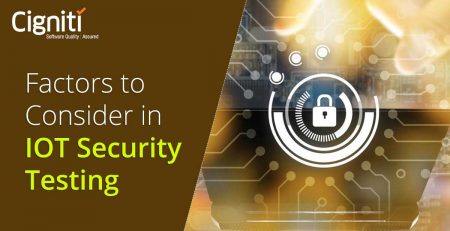6 Tips to Prevent a Ransomware Attack: Secure Your Data
Ransomware is malware that encrypts information and documents and demands a rescue quantum for decoding them. Ransom payments are made by cryptocurrencies like Bitcoin, facilitating online and anonymous payment.
How Does Ransomware Work
Ransomware can be spread from a malicious website that exploits a known vulnerability, phishing dispatch juggernauts, social engineering, or web-grounded drive malware injections. A downloader is placed on the system when the exploit executes. The downloader quietly communicates with control servers to download and install malware/ransomware and secure an encryption key. The communicated C&C garçon responds by transferring the requested encryption crucial and furnishing payment styles. Ransomware starts to cipher the entire hard fragment content, particular lines, and sensitive information. A warning is displayed on the screen with instructions on how to pay for the decryption key.
Cost of Ransomware Attacks
Ransomware attacks incur several costs and consequences, including:
- Loss of Data and Information: Ransomware attacks can result in the loss or corruption of critical data and information, leading to operational disruptions and potential financial failures.
- Downtime and Loss of Productivity: When systems and networks are compromised, businesses often experience downtime, resulting in lost productivity and revenue. Employees may need help accessing essential tools and resources necessary for their work.
- Ransom Costs: In ransomware attacks, perpetrators demand a ransom payment to restore access to encrypted data. The cost of the ransom can vary significantly and depends on the attacker’s demands.
- IT Adviser Time and Labor: Recovering from a ransomware attack requires significant IT expertise and resources. Organizations often need to invest in hiring IT professionals or external consultants to mitigate the attacks, restore systems, and strengthen security measures.
- Forensic Disquisition Cost: To investigate the attack, identify the vulnerabilities exploited, and gather evidence for potential legal actions, organizations may need to engage forensic experts. These experts can be costly, adding to the overall financial impact of the attack.
- Data Leak and Compliance Issues: Ransomware attacks can lead to data breaches, potentially exposing sensitive information and resulting in legal and regulatory consequences, such as fines for non-compliance with data protection laws.
Impact on Reputation and Loss of Business Connections: A successful ransomware attack can harm a company’s reputation, erode customer trust, and damage business relationships. Customers and partners may hesitate to engage with an organization that has experienced a security breach.
Overall, the costs of ransomware attacks encompass not only the immediate financial burden but also the long-term repercussions on a business’s operations, reputation, and relationships. Preventive measures and robust cybersecurity strategies are crucial to mitigate these risks.
Types of Ransomware
Ransomware is malicious software that holds victims’ data or devices hostage and comes in various forms. Here are three common types of ransomware:
-
Locker Ransomware:
This type of ransomware locks the victim’s device, preventing access to the user interface. The attacker demands a ransom to unlock the device.
-
Scareware:
Scareware uses deceptive tactics like pop-up ads to trick users into downloading unnecessary or harmful software.
-
Crypto Ransomware:
Crypto ransomware encrypts important files on the victim’s computer, blocking access until a ransom is paid. The attacker provides a decryption key or instructions for payment, often involving cryptocurrencies like Bitcoin.
Ransomware Prevention Tips
Ransomware infections often lead to paying a ransom to retrieve encrypted files. The key to avoiding such attacks lies in prevention. Here are six valuable tips to help you in ransomware prevention.
-
Exercise caution with email attachments from unfamiliar sources:
Refrain from opening attachments or clicking suspicious email links. If you have doubts about the legitimacy of a message, consider contacting the sender directly to verify its authenticity. Don’t hesitate to delete suspicious emails that appear to be phishing attempts. If you’re unsure, seek guidance from your IT department.
-
Safeguard your files through regular backups:
Since ransomware can encrypt them, creating backups and storing them securely is essential. Keep copies of your files safe, or consider using a trusted backup service.
-
Patch or Update your Installed software:
Cybercriminals often target vulnerabilities in outdated software to gain unauthorized access. Regularly updating your software can greatly reduce the risk of ransomware attacks. Enable automatic updates or visit the software provider’s official website to ensure you have the latest patches and enhancements.
-
Utilize System Restore to restore your system to a pristine state:
If System Restore is enabled on your Windows computer, you can revert to a clean condition. This can help recover from malware damage. However, be aware that certain ransomware variants, such as CryptoLocker, may delete shadow files from the system restore, so it’s important to exercise caution.
-
Immediately disconnect from the Wi-Fi or unplug from the network:
If you open a file that detects ransomware but hasn’t yet displayed any ransomware characteristics, the screen cleverly severs the connection with the server before encrypting files. By disconnecting from the network, you may be able to minimize the damage. Since encryption takes time, you can intervene before your files are fully compromised. While not flawless, this mechanism functions to a certain degree.
-
Ensure downloads are obtained from verified and secure websites:
Avoid downloading media files or software from untrustworthy sources. Doing so can decrease the likelihood of ransomware infecting your system. It is advisable to utilize reputable and dependable websites for file downloads exclusively. To identify such websites, look for trust seals and ensure that the browser address bar displays “HTTPS” instead of “HTTP.” A shield or lock symbol in the URL bar may indicate a secure page. Exercise caution when downloading anything onto your mobile device and rely on either the Google Play Store or the Apple App Store, depending on your device.
Embracing proactive cybersecurity measures is vital, given the alarming frequency of daily cyberattacks. By diligently educating all members of your organization about the perils of social engineering scams, phishing attacks, and similar threats, you can effectively mitigate the risks of cyberattacks and safeguard your network. Investing in advanced technologies that minimize data loss, remaining vigilant against potential risks posed by vendors and third parties, and regularly assessing knowledge exposure and credential leakage vulnerabilities is advisable.
Conclusion
By incorporating these practices into a comprehensive cybersecurity risk assessment strategy, you enhance security and optimize cost efficiency. Following these guidelines alone can significantly reduce the likelihood of falling victim to cybercrime.
Cigniti’s unique Application Security Testing Services help you weed out risks from your application and ensure that your applications meet regulatory and compliance requirements. Leading businesses in North America rely on our penetration testing services to make their applications threat-proof. We have worked with leading large and small companies and helped them build safe and secure software for their users.
Cigniti’s team validates whether your cloud deployment is secure and gives you actionable remediation information when it’s not complying with the standards. The team conducts proactive, real-world security tests using the same techniques employed by attackers seeking to breach your cloud-based systems and applications.
Need help? Consult Cigniti’s team of experienced security testing experts to understand how they can help tackle and prevent any malicious cyberattack against your organization.
Schedule a discussion today.





Leave a Reply